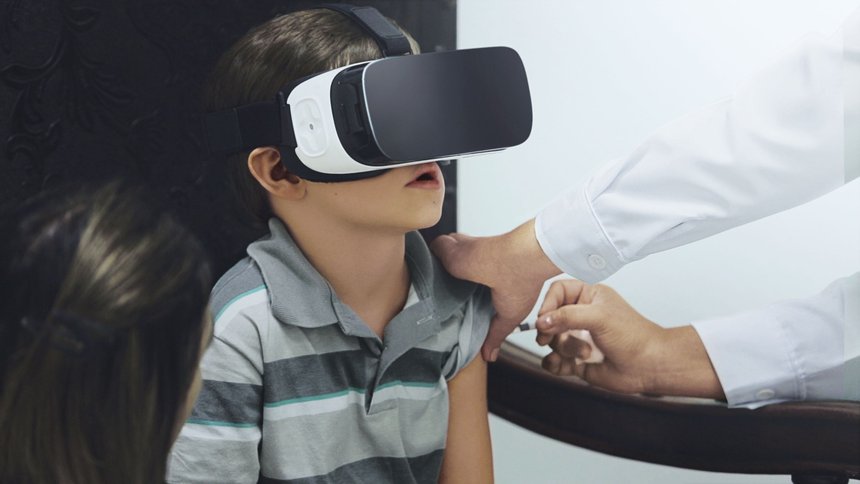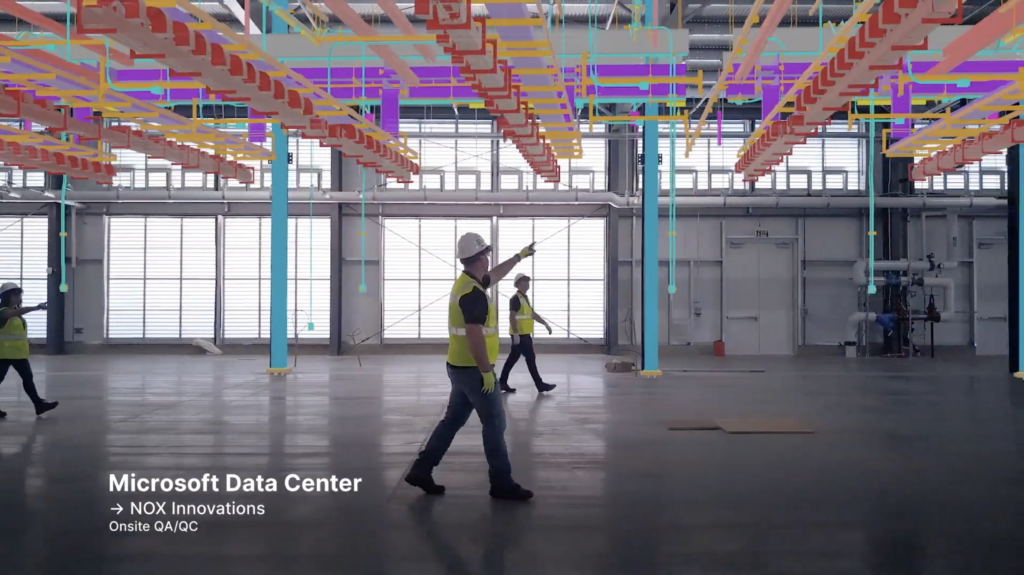Walk through any major tech conference or glance at your news feed, and you’ll see it: AR and VR are everywhere. From mobile apps that let you preview furniture in your living room, to immersive games that transport you to other worlds — the line between Reality and digital augmentation is blurring fast. But while these technologies are often lumped together, they offer distinct experiences and opportunities.
At StudioKrew, being a top AR VR App Development Company, we’ve worked with clients across industries exploring immersive technologies. One of the most common questions we get is: What’s the actual Difference between AR and VR, and which one should we invest in? This blog dives deep into that answer — not just from a technical perspective, but from a practical, business-first angle.
Augmented Reality: Enhancing the Physical World
Imagine walking down a busy street, holding up your phone, and seeing restaurant reviews float above storefronts in real time. That’s augmented Reality (AR) in action. It overlays digital content—graphics, sounds, haptic feedback—on top of the real world, enhancing your perception of Reality. Visit AR Game Development Company page to delve into detail and get free proposal from our experts.

You’ve probably used AR more than you think. Snapchat filters, Instagram effects, Google Lens, and Pokémon GO are common examples. But AR is no longer just for play. It’s becoming a serious tool in sectors like:
- Retail: Brands like IKEA and Sephora use AR to let users visualize products at home or on themselves.
- Healthcare: Surgeons use AR overlays during procedures for better precision.
- Manufacturing: AR guides help technicians with step-by-step visual instructions.
Hardware? Most AR experiences work on smartphones and tablets, although smart glasses like Microsoft HoloLens and Magic Leap are expanding the potential.
Market Insight: According to Statista, the global AR market is projected to reach over $50 billion by 2026, driven by consumer demand and enterprise adoption.
Also Read: Top AR Development Companies with Mind-Blowing Experiences – 2024
Virtual Reality: A Fully Immersive Digital World
While AR enhances, VR transports us to new realms. Virtual Reality immerses users in fully digital environments, completely disconnecting from the physical world. With a headset and sometimes controllers or motion trackers, you can embark on adventures through a 3D game, a vibrant virtual workspace, or a tranquil meditation garden on Mars. Ready to dive deeper into the world of VR Game Development services by StudioKrew? Connect with our business team to schedule a feasibility analysis.

It’s not just for gaming. VR is being used for:
- Training: Walmart and UPS use VR to train employees in realistic scenarios.
- Education: Students can walk through historical events or explore space.
- Healthcare: Therapists use VR for exposure therapy and PTSD treatment.
Hardware? Popular VR devices include Meta Quest, HTC Vive, and Sony PlayStation VR2. While costs are decreasing, the requirement for dedicated hardware is still a barrier to mass adoption.
Market Insight: According to IDC, global VR headset shipments are expected to reach 23 million units annually by 2026, up from just under 9 million in 2022.
So, What’s the Difference if we compare?
| Feature | Augmented Reality (AR) | Virtual Reality (VR) |
|---|---|---|
| Environment | Enhances real world | Replaces real world |
| Device | Works on phones, tablets, smart glasses | Requires VR headsets and controllers |
| Interaction | Overlays graphics on surroundings | Fully immersive 3D environment |
| Ideal For | Retail, education, live support | Training, gaming, simulations |
The choice between AR and VR often depends on your goals. If you want to create immersive brand engagement in physical environments, AR might be your route. If you want to build deep, controlled simulations, VR is your answer.
Top AR and VR Use Cases in Business
1. AR in Field Services: Imagine a technician fixing an industrial machine with live visual instructions overlaid through AR glasses. It cuts training time and reduces errors.
2. VR in Hospitality Training: Marriott has used VR to train front-desk staff and improve customer service simulations.
3. AR in Museums: AR apps can bring ancient artefacts to life with animations and contextual storytelling.
4. VR in Healthcare: Companies like Oxford VR are treating social anxiety and phobias using controlled VR environments.

Blurring the Lines: Mixed Reality (MR)
Mixed Reality is where things get even more interesting. It blends elements of both AR and VR, allowing physical and digital objects to interact in real time. Visit our Mixed Reality App Development Company page to learn more.

You can think of MR as a spectrum. On one end, you have simple AR filters; on the other, fully immersive VR worlds. In the middle, MR enables scenarios like:
- Interactive design collaboration, where teams manipulate 3d models in a shared physical space.
- Advanced training systems, where users can interact with real and virtual objects simultaneously.
Devices like Microsoft HoloLens 2 and Magic Leap 2 are pushing MR forward. Many experts believe Mixed Reality will lead the way as industries converge toward the metaverse.
Industry Insights: The AR/VR/MR Market in Numbers
- The global AR/VR market is expected to exceed $250 billion by 2032.
- North America and Asia-Pacific are leading adopters in enterprise use cases.
- Over 70% of Gen Z users have interacted with AR features via social apps.
- Nearly 80% of enterprises using VR for training report better retention rates and performance.
This is more than hype — it’s a paradigm shift.
Common Challenges in AR and VR Adoption
Like any emerging tech, AR and VR come with hurdles:
- Hardware cost and accessibility
- Limited content ecosystems (though growing rapidly)
- Motion sickness and physical discomfort in VR
- Privacy and data concerns with location-based AR
Despite the challenges, innovation is accelerating in the AR and VR space. With Apple’s Vision Pro, Meta’s continued investments, and the rising adoption of 5G, the infrastructure for immersive experiences is improving. This ongoing innovation should reassure businesses about the future of AR and VR, encouraging them to consider these technologies for their operations.
Which One Should You Choose?
Choosing between AR, VR, or MR isn’t just about technology — it’s about purpose.
- Choose AR App Development Services if your goal is to enhance the physical world. It’s excellent for retail, real estate, education, and field support industries. AR provides a lower barrier to entry and is widely accessible through smartphones.
- Choose VR Game Development Services when you want to fully immerse users in a different environment. It is ideal for simulations, gaming, remote collaboration, therapy, and high-impact training scenarios.
- Choose MR Game Development Services if your use case requires complex interaction between digital and real-world objects. MR is perfect for collaborative design, high-end industrial training, and future-facing enterprise applications.
Ultimately, your choice should be driven by your audience’s needs, budget, and the experience you want to deliver.
Still not sure? That’s where we come in.
How AR & VR Are Transforming Business in 2025
You don’t need to be a Big Tech company to benefit from AR/VR. Even small and mid-sized businesses are adopting:
- AR-based product previews for e-commerce
- VR onboarding programs for remote teams
- Gamified learning apps using AR for children or enterprise learners
If you’re considering entering this space, aligning the technology with your audience and goals is key.
At StudioKrew, we help clients across retail, healthcare, education, and gaming build scalable and immersive AR, VR, and MR solutions — from concept to deployment. Our team understands how to leverage Unity, Unreal, WebAR, ARKit, and other tools to build cross-platform experiences that actually work.
✅ Learn more: AR Game Development Company
✅ Explore: VR Game Development Company
✅ Build your vision: AR VR App Development
✅ For blended solutions: Mixed Reality App Development Company
Final Thoughts
AR and VR aren’t buzzwords anymore. They’re shaping the future of how we learn, shop, play, train, and communicate. Whether you’re exploring immersive storytelling, looking to train staff remotely, or rethinking your product experience — understanding the difference between AR and VR is your first step.
The second? Choosing the right tech partner to bring it to life.
If you’re ready to explore what AR, VR, or Mixed Reality can do for your brand, StudioKrew is here to help.
Stay curious, stay immersive.
Want a consultation? Drop us a line, and let’s create something groundbreaking together. Connect with StudioKrew





